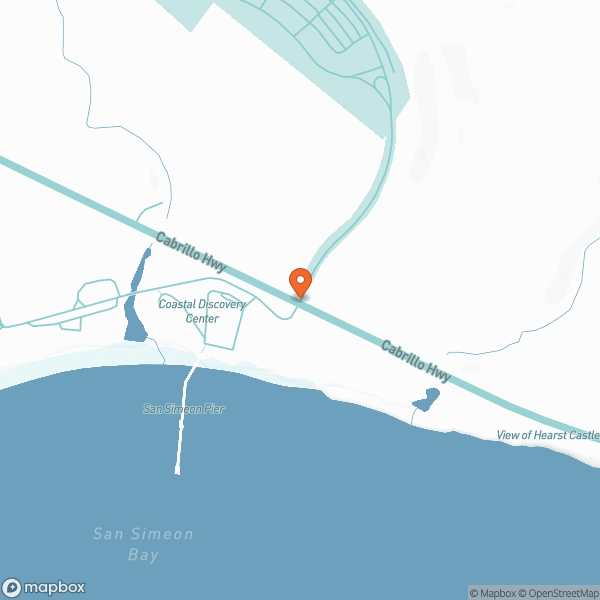Hearst Castle Zebras of San Simeon
Driving along Highway 1 between Cambria, San Simeon, and Ragged Point is filled with beautiful vistas. There are sweeping hillsides, craggy shores, elephant seal rookeries, and… zebras? That’s right, zebras! Visitors are often – rightfully – shocked to see zebras grazing hillside in and around San Simeon and Hearst Castle. While they’re sometimes far back from the road, they’re typically close enough to be able to see with a keen eye or with a pair of binoculars. And, after the initial shock of seeing zebras in San Simeon wears off, visitors often wonder how they made their way from Africa to California. The short answer is that the zebras of San Simeon are descendants of zebras imported by William Randolph for Hearst Castle but read on for a more detailed explanation below.
Hearst Castle Zoo
William Randolph Hearst was a man of insatiable curiosity and inexhaustible funds to indulge that curiosity. After building the marvel that is Hearst Castle with architect Julia Morgan, Hearst sought to expand the holdings of this property to include varied natural habitats for animals not native to California.
Originally called the “Hearst Castle of Comparative Zoology,” his goal was to provide visitors with an experience more like that of a safari and less than that of a zoo. Some animals were free to roam in designated areas, while others were in caged off sections to ensure safety for everyone. Once the largest private zoo in the world, Hearst Zoo’s caged animals included grizzly bears, tigers, lions, leopards, jaguars, monkeys, and even an elephant. The free-roaming animals included about 300 fallow deer, antelope, elk, camels, kangaroos, 4 giraffes, and the ancestors of the zebras we see today.
Unfortunately for Hearst Castle, the Hearst Castle Zoo was forced to dismantle due to financial constraints in 1937. All of the animals at Hearst Castle were either donated to public zoos or were sold to private collectors. However, when Hearst Castle was donated to the State of California in 1958, there was still a large variety of animals in and around the property, including some rogue zebras.
Where to see Hearst Castle Zebras Today
Today, Hearst Castle Zebras are most often spotted on the east side of Highway 1 just north of Cambria up to San Simeon and Hearst Castle. The zebras have settled in amongst Hearst Ranch cattle and the two species seem to have struck up a respectful coexistence.
Respectful coexistence does, however, not extend to humans! There, keeping a respectful distance is key. It’s important to not approach Hearst Castle zebras no matter how docile they may look. Zebras have a very territorial streak that has historically been a defense against the predators of Africa. Evolution has not quite bred their territorial nature away in the relatively safe area along the Central Coast, so zebras are still known to attack by kicking and biting. And while that may not sound all that dangerous, zebras can break the jaws of lions with their kicks, so they can definitely do damage to a well-intentioned person hoping for a great picture!
Although the initial count of rogue zebras circa 1958 is unclear, they’ve reproduced over the decades to about 126 in number, as of 2019. As their numbers have slowly but steadily increased, visitors have ample opportunity to spot them along Highway 1. During very dry months, they’re more likely to be farther east and closer to the tree line. When you spot on, pull over to the side of the road to get a better view with binoculars. Since they roam in packs, seeing one means you’ll see more! Please do keep in mind, however, that Hearst Ranch itself is still private property so please keep zebra-spotting limited to roadside viewing.
Zebra Facts
Zebras are such unusual animals that it’s always fun to learn some facts about them! Currently, zebras are an endangered species, which makes the Hearst Castle Zebras that much more special. Thankfully, there are few natural predators for zebras around San Simeon so they will hopefully remain safe and healthy here.
Zebras are most closely related to horses. However, unlike horses, zebras have largely been considered untrainable. Their territorial nature is partnered with a stubbornness that can be impossible to change. That said, there have been a few – very few – cases of successful zebra domestication in recent years. Whether they’re ultimately trainable or not, we’re just happy to let them do their zebra thing out here in the wilds of San Simeon!
Zebras have black skin and white fur, creating striped patterns unique to each animal like human fingerprints. Although their stripes stand out at close range, the stripes provide remarkable camouflage from a distance because the eye tends to get tangled up in the stripes. Zebra groups, fittingly called “a dazzle,” create an optical illusion for predators that makes it impossible to single out individuals.

